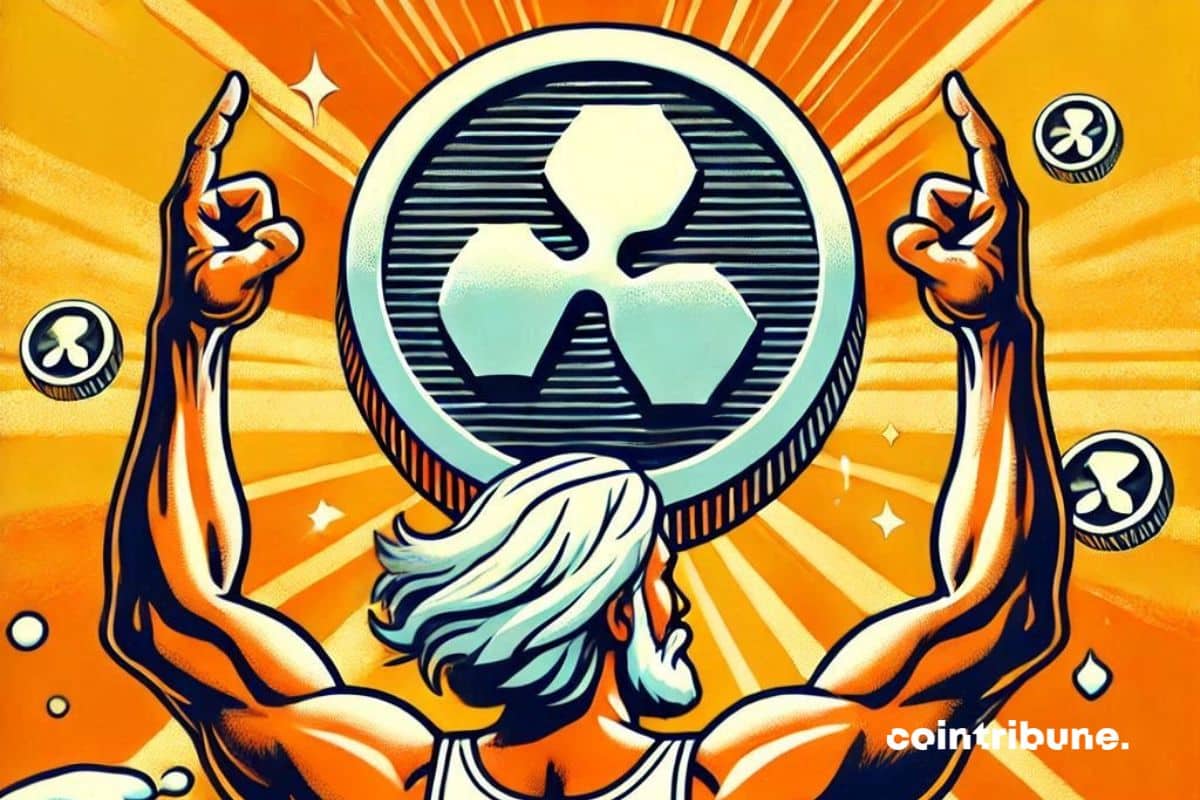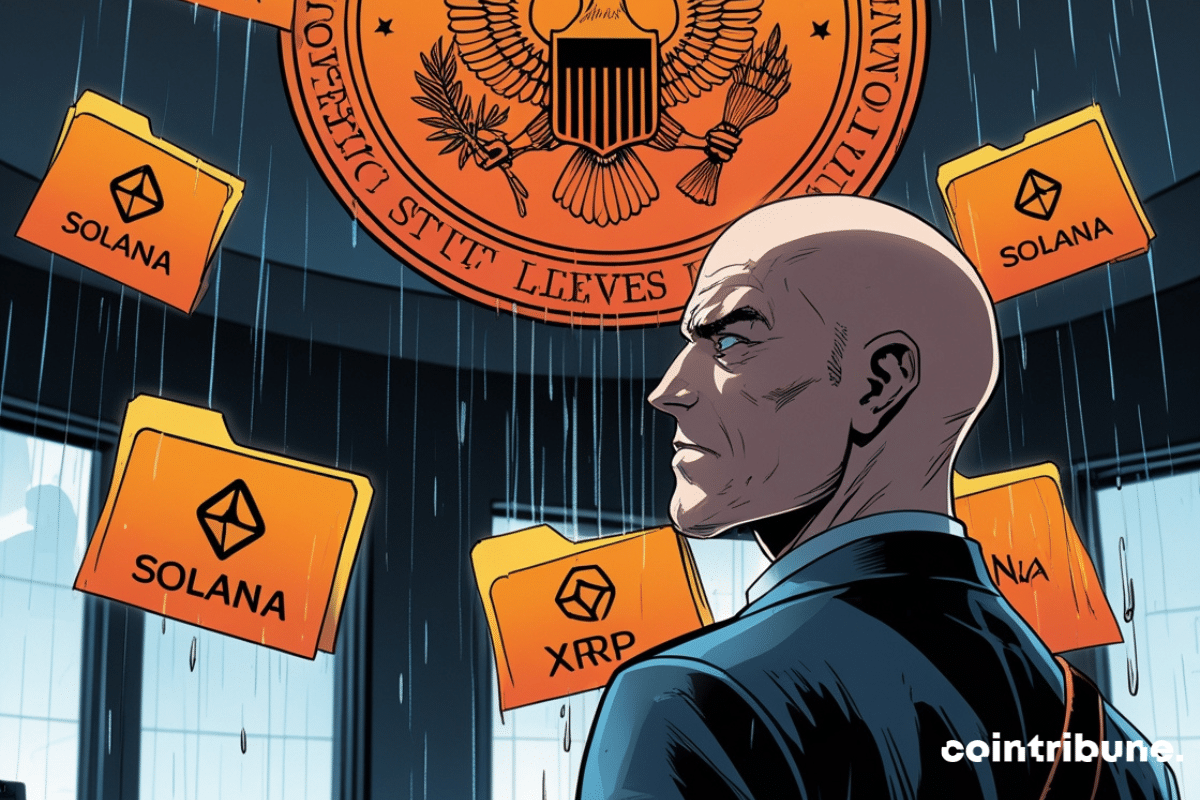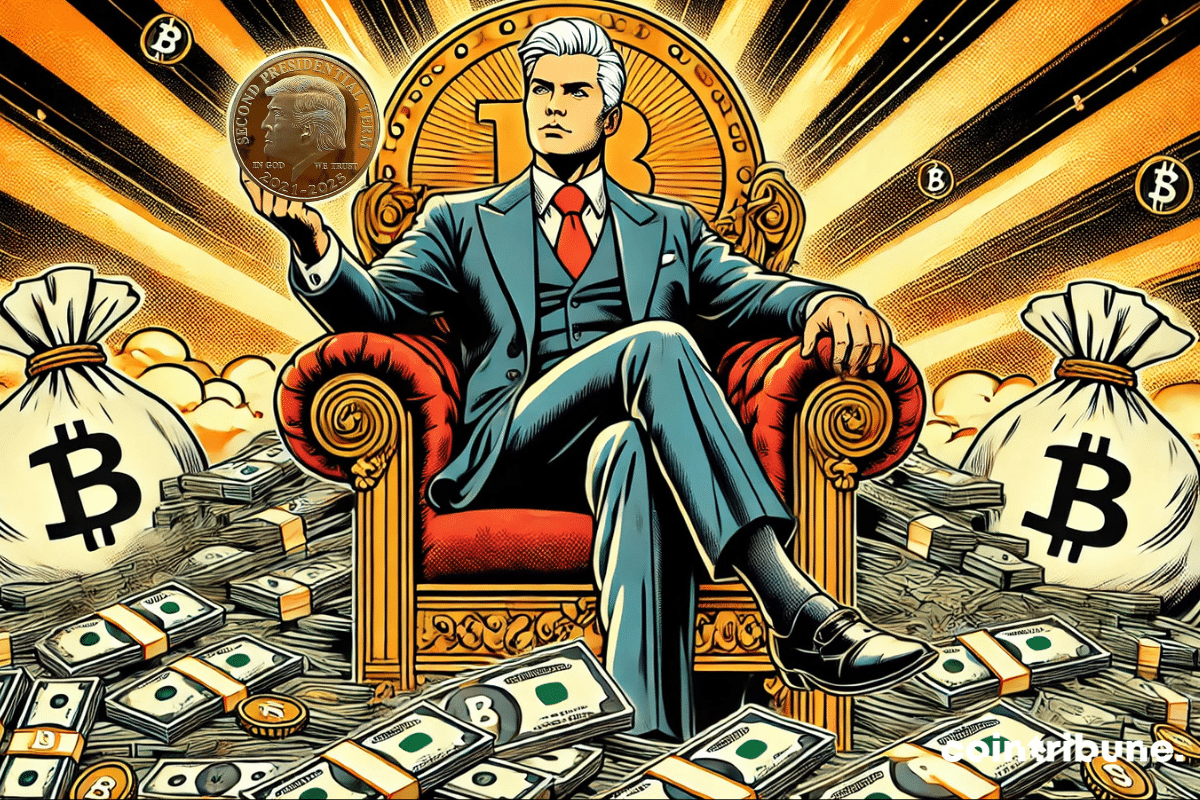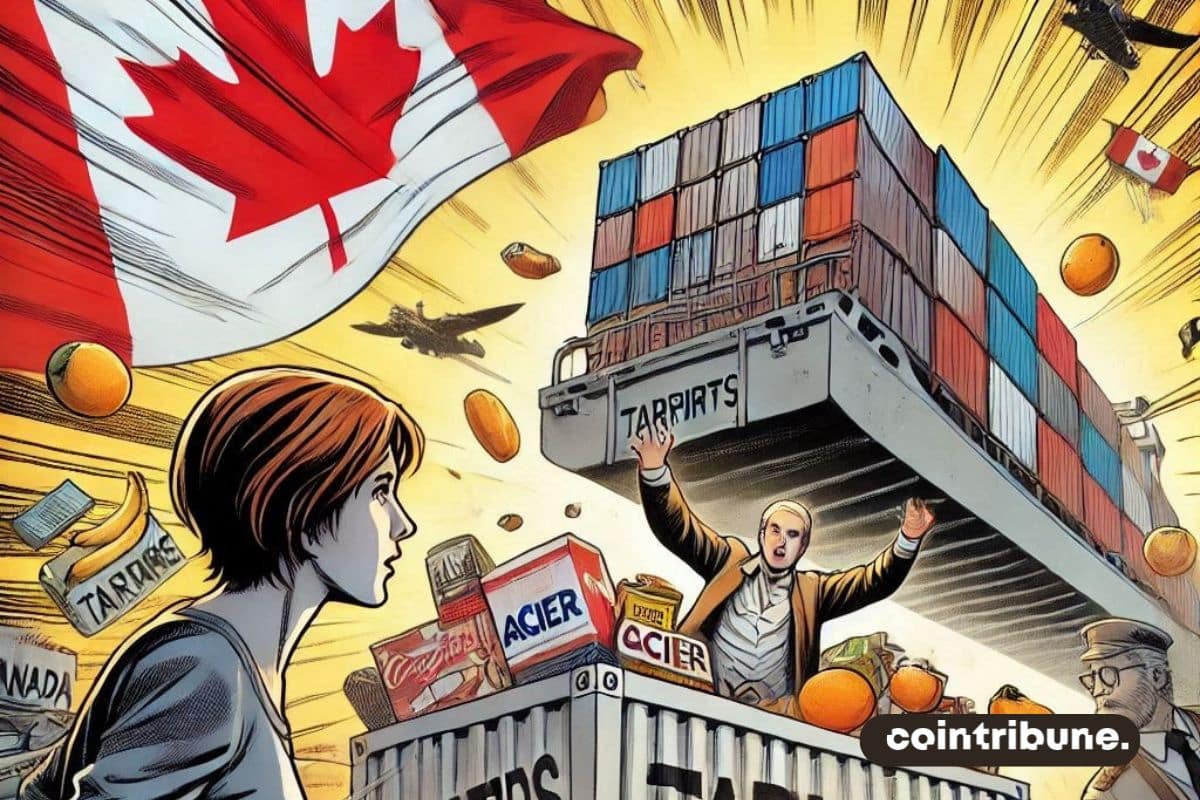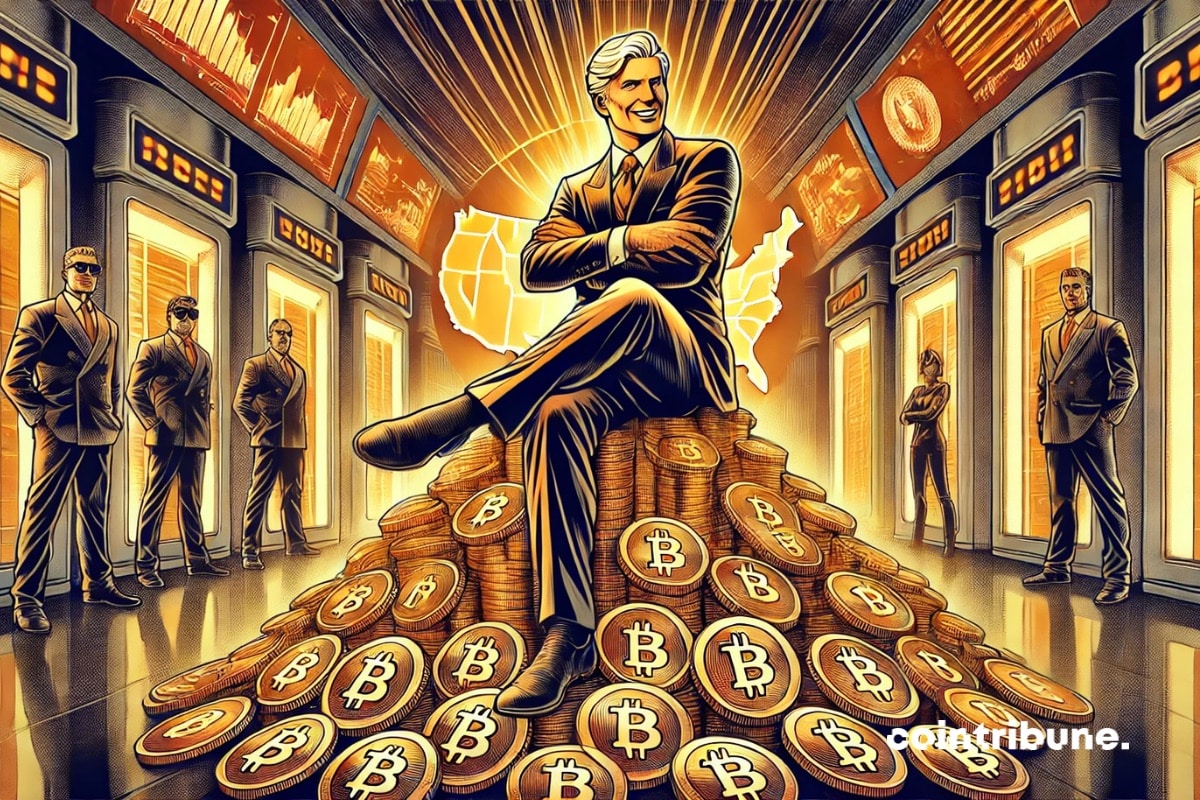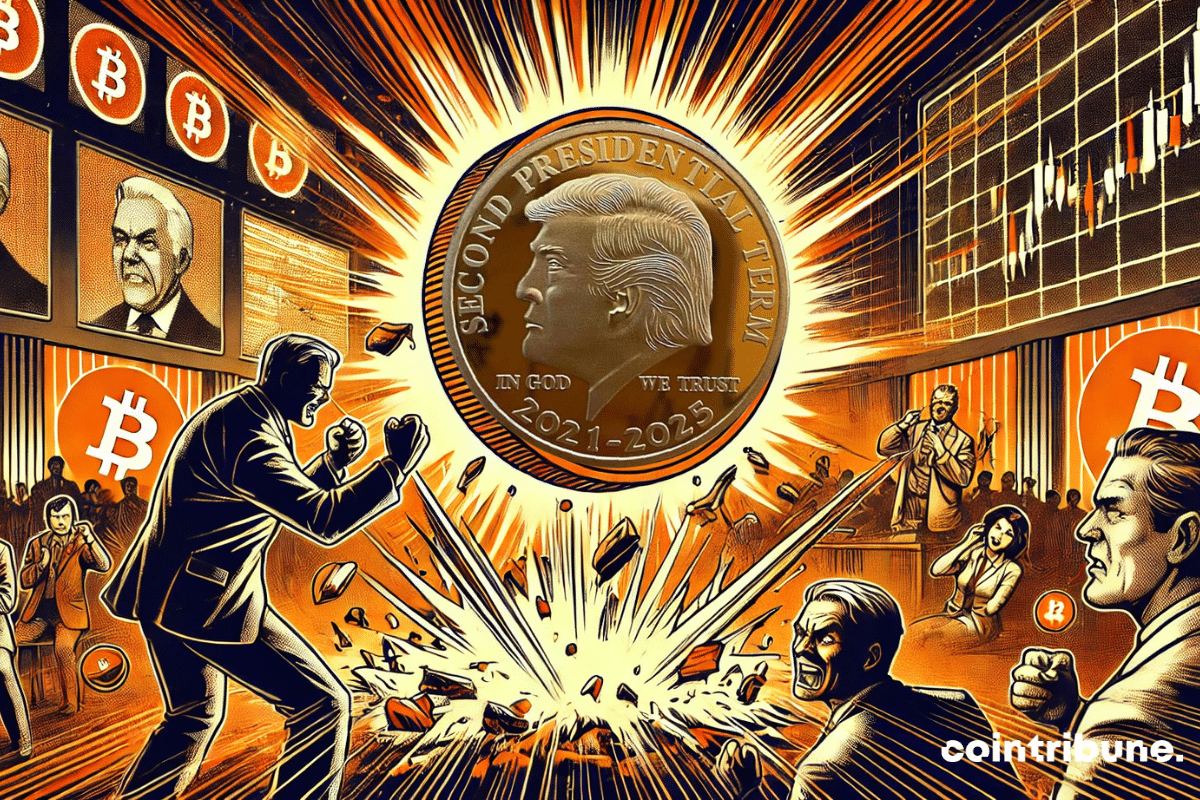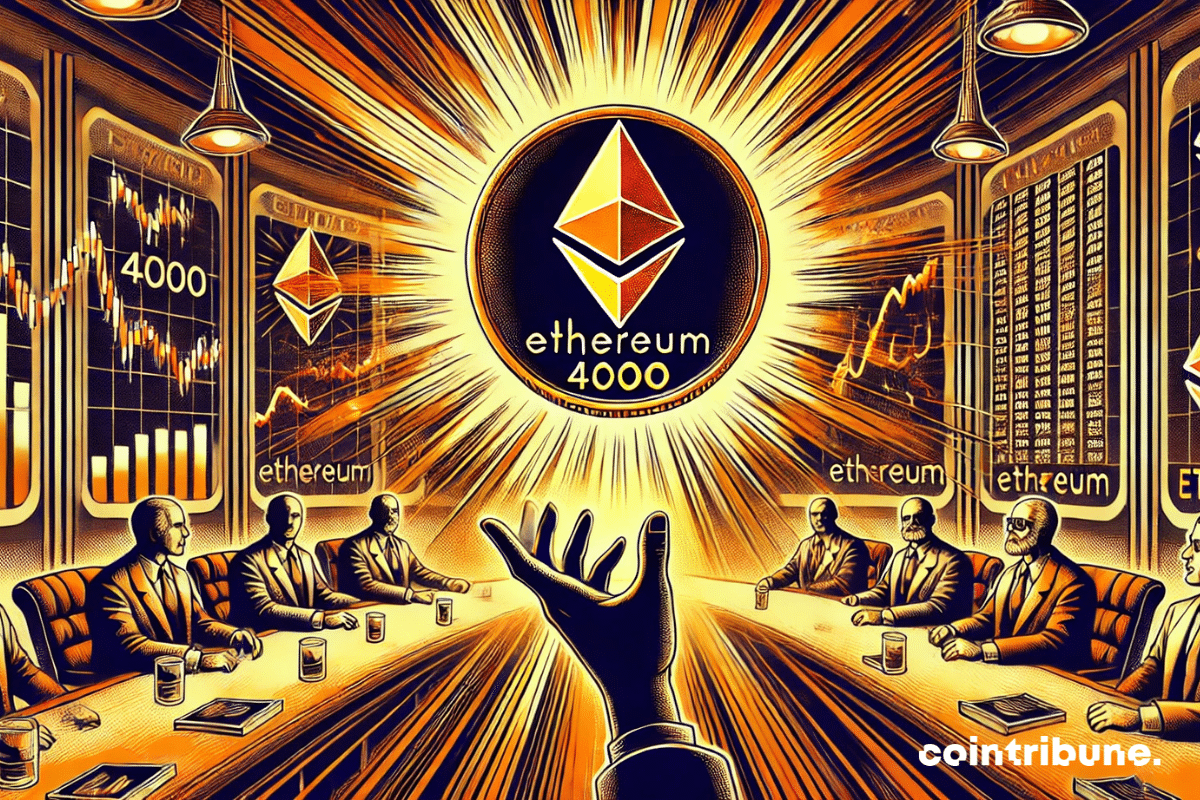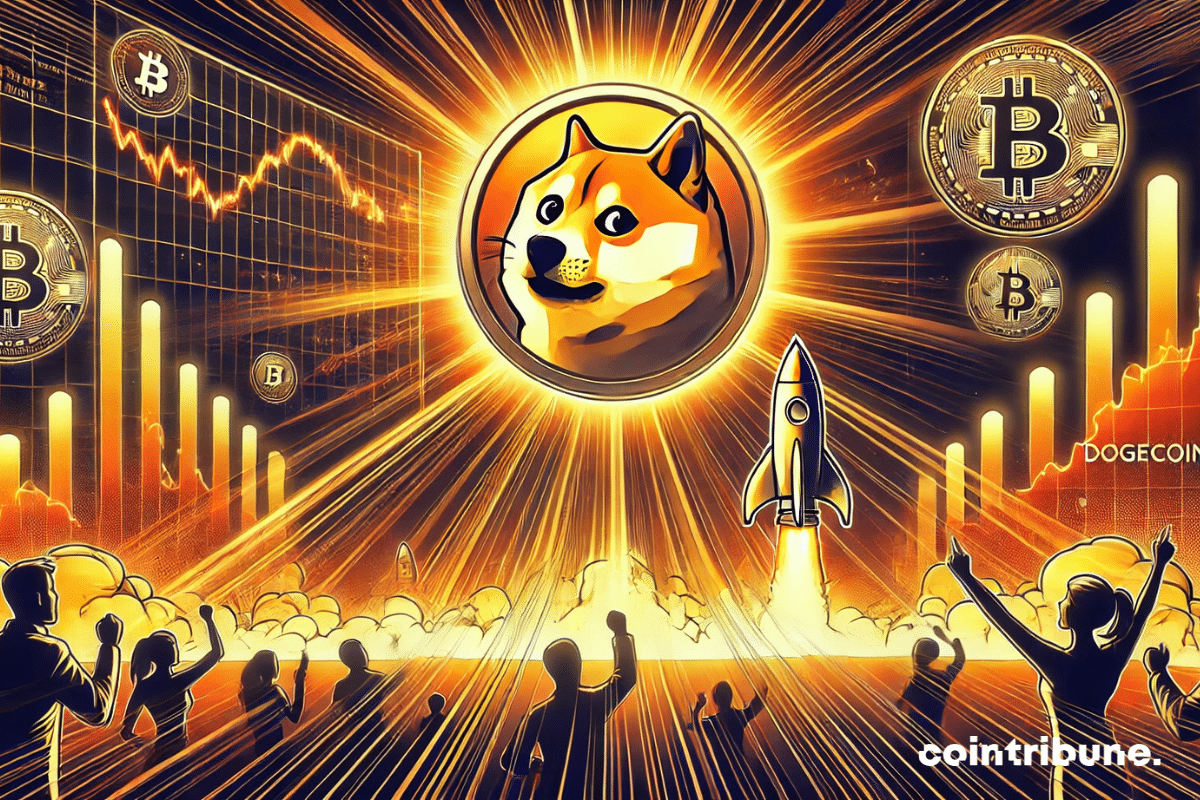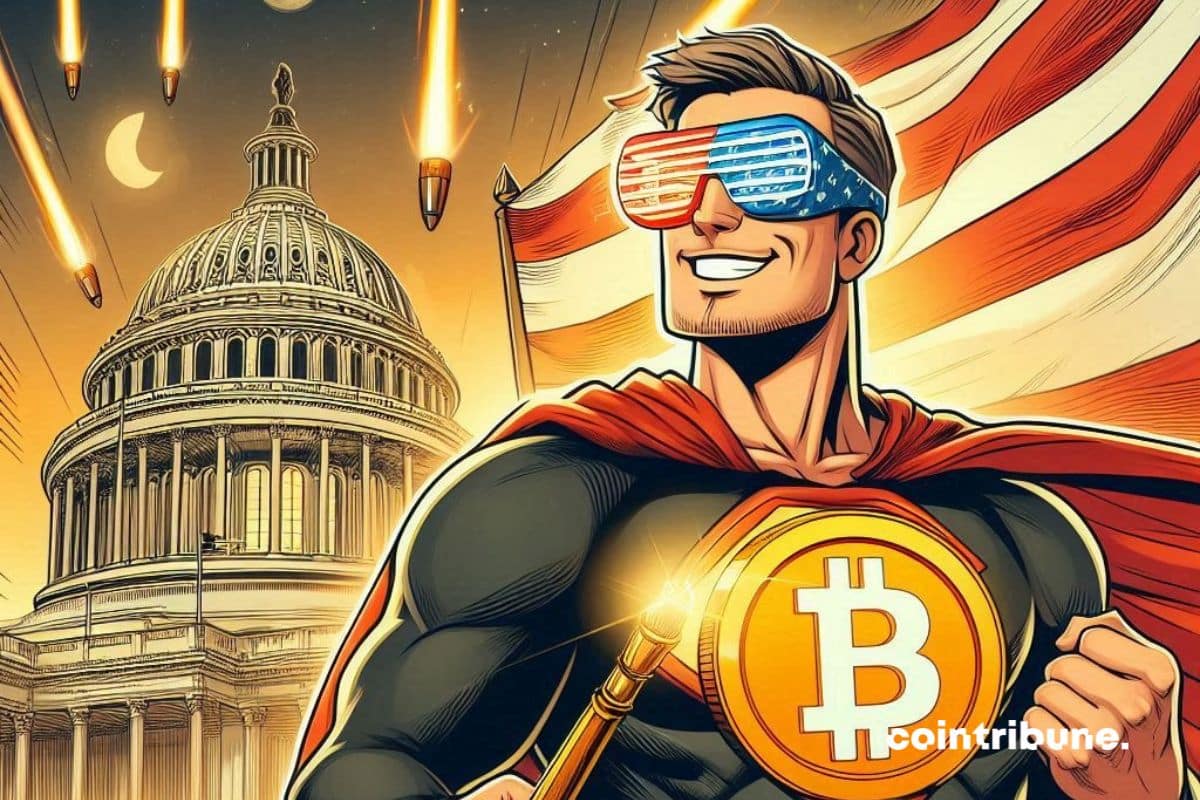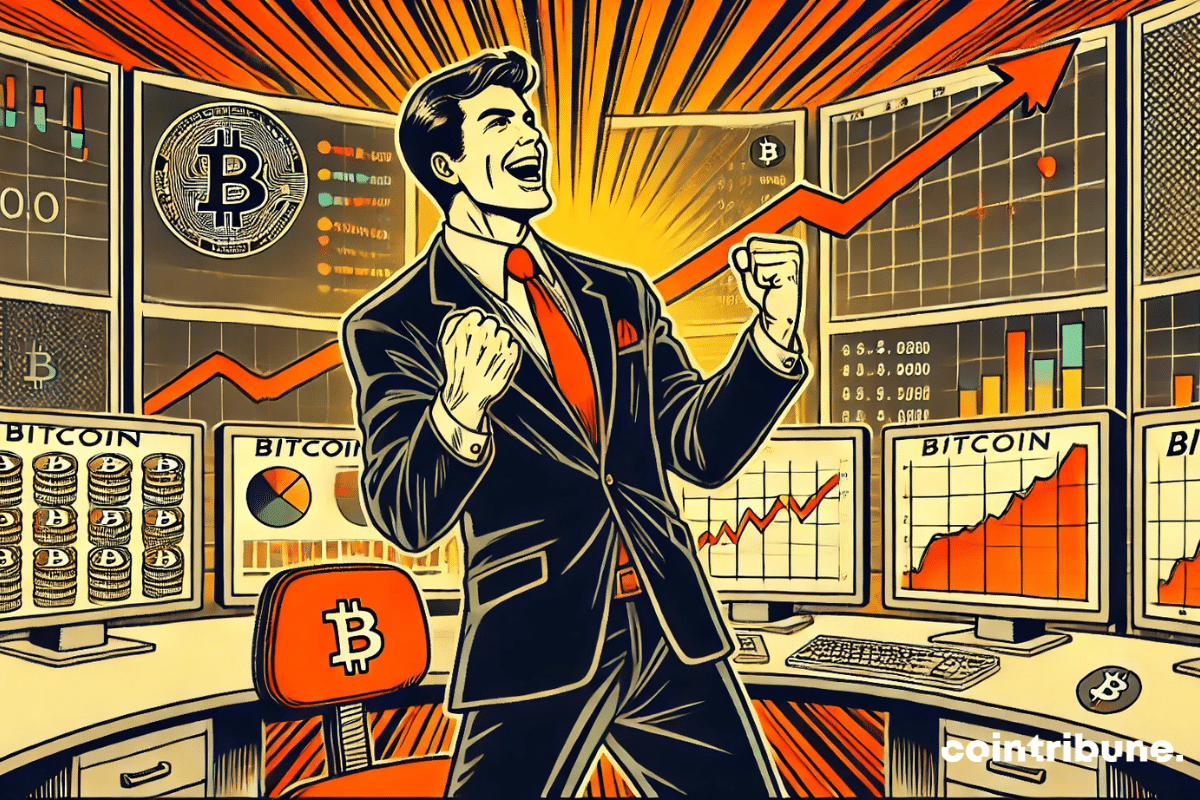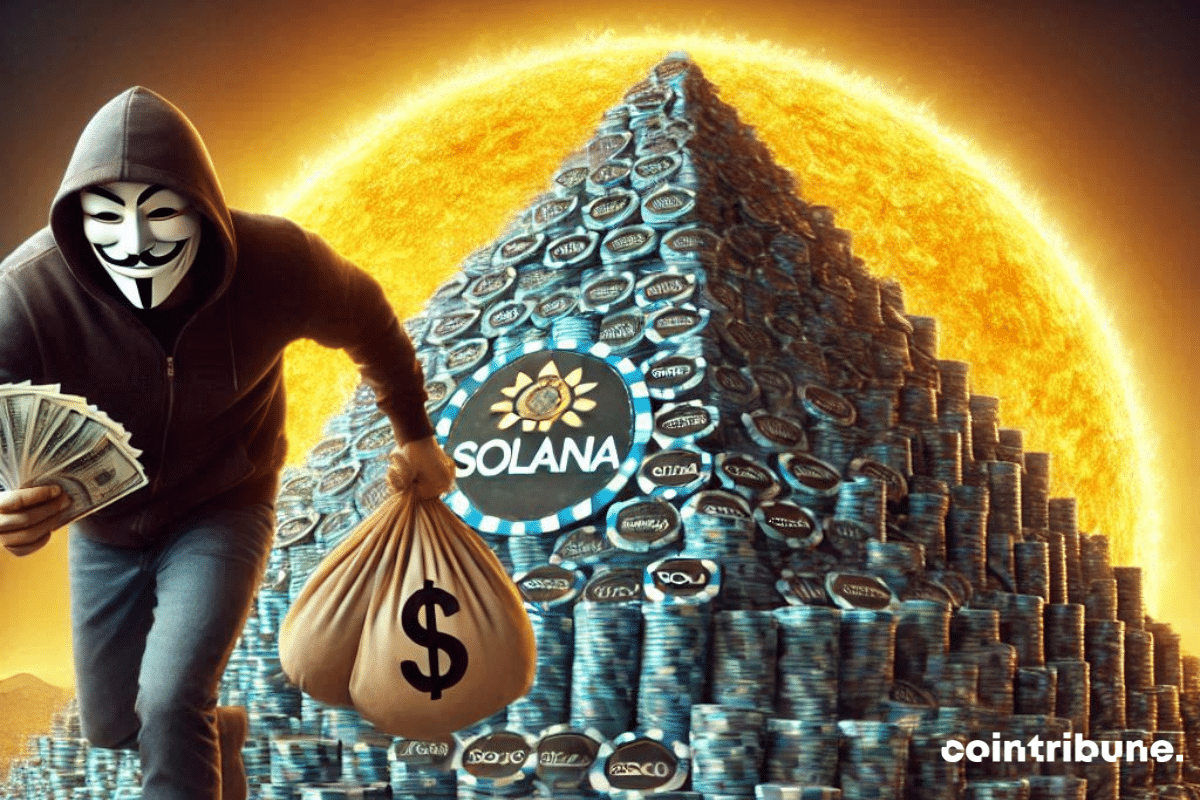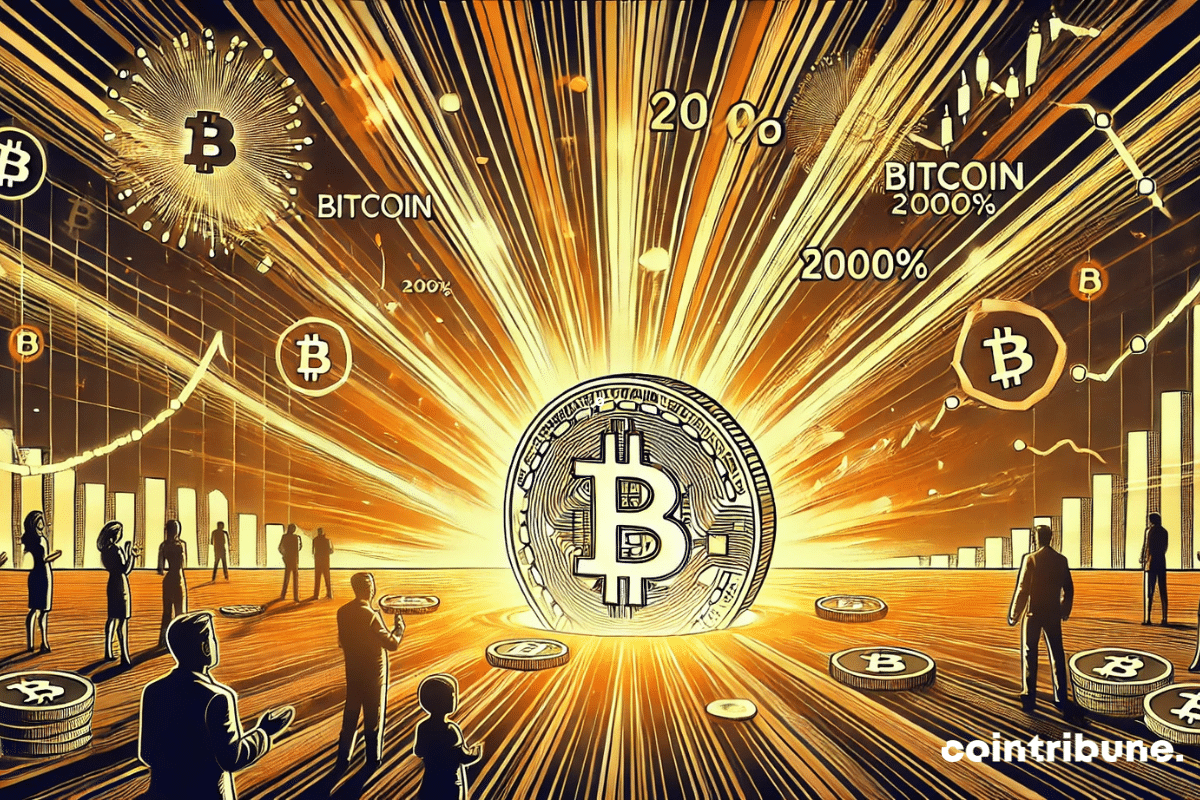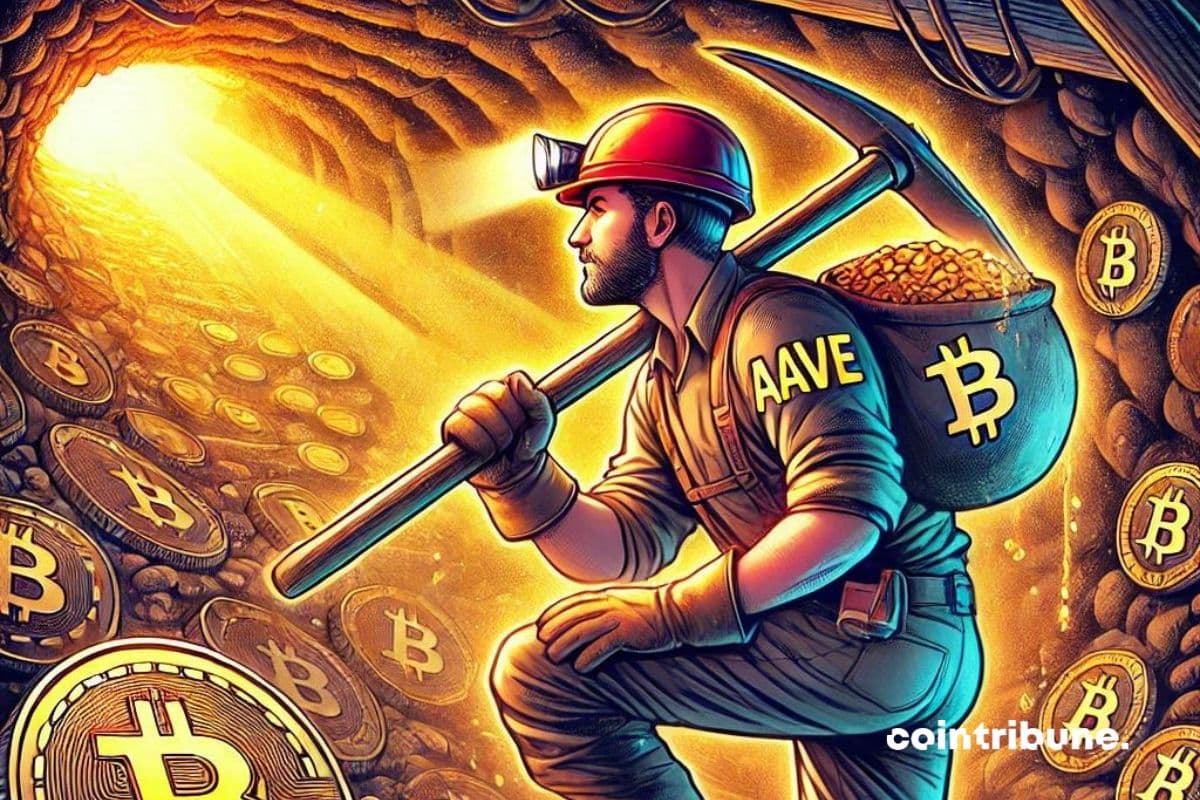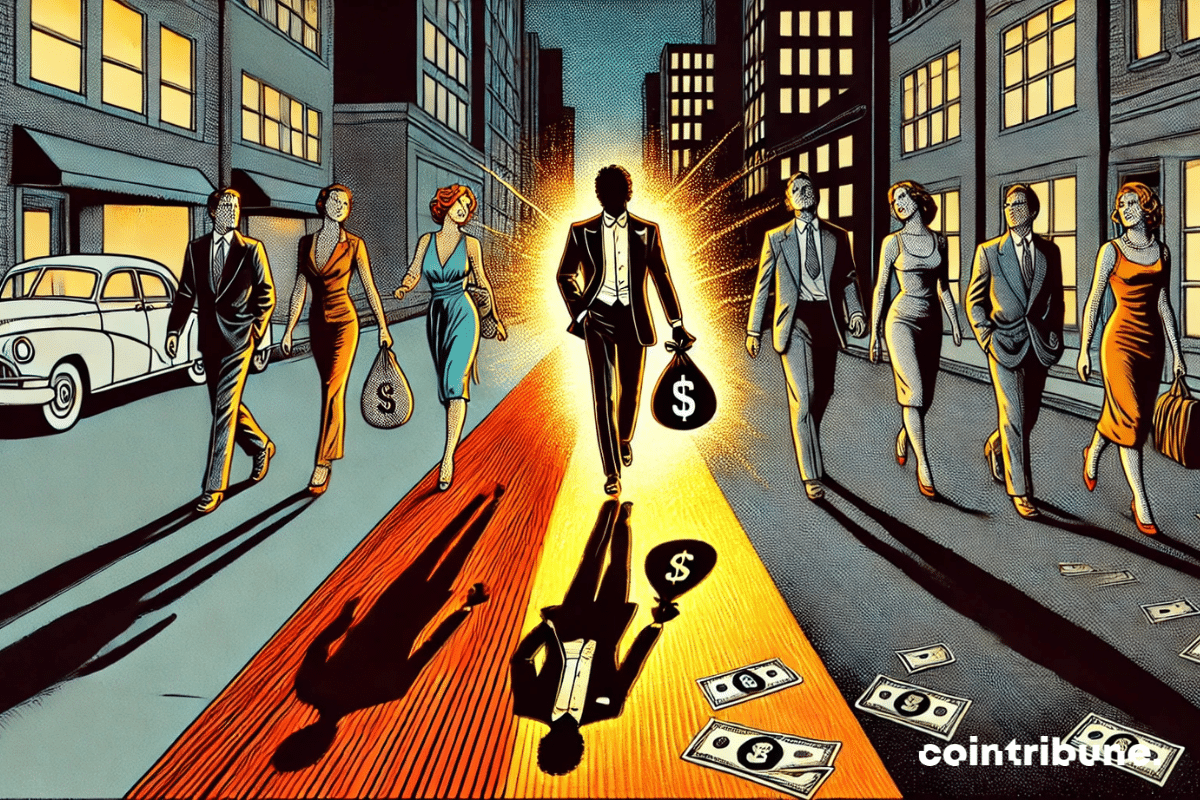The dance stops for American TikTokers. Between Chinese threats and political pirouettes, TikTok is stretching itself thin. Trump promises, but ByteDance resists. The suspense continues.
une
Semiconductors have become an essential pillar of the global economy and technological security. In this context, China announced an unprecedented investment of 37 billion euros to accelerate its technological autonomy, which has so far been hindered by the dominance of Europe and the United States. This strategic sector, embodied by players such as ASML, the world leader in photolithography equipment, is now at the heart of fierce competition. Beijing is not only looking to bridge its gap but to redefine the balance of power with the aim of achieving complete independence. This initiative could reshape the contours of global innovation and intensify tensions in an already high-pressure market.
The cryptocurrency Ripple (XRP) is currently experiencing a spectacular comeback with a rise of $1.5 billion in payment volume. This increase in on-chain metrics and user engagement is attracting the attention of crypto investors, especially with the upcoming inauguration of Donald Trump, which could further boost demand.
As Gensler packs his bags, the SEC is overwhelmed by a tsunami of crypto ETFs, with Solana and XRP at the forefront.
Michael Saylor, the visionary co-founder of MicroStrategy, sees considerable potential for Bitcoin adoption in France. This statement follows a meeting with Sarah Knafo, a Member of the European Parliament, during a lunch where they discussed the future of cryptocurrencies and energy.
According to economic projections and analysis by international experts, no European economy will be among the top ten world powers by 2050.
The memecoin $TRUMP shook up the crypto market this weekend, seeing its value soar by 490% in less than 24 hours. This spectacular performance could have quintupled the fortune of former U.S. presidential candidate Donald Trump, according to analysts.
The cryptosphere is going through a period of uncertainty marked by sustained volatility in the markets. Among the most monitored assets, Shiba Inu (SHIB) particularly draws attention. This memecoin, often compared to Dogecoin, is at the heart of an intense mobilization of its community, which recently burned over 66 million tokens to reduce the circulating supply. Despite these efforts, the price of SHIB has plunged, highlighting the limits of token burn mechanisms in the face of market forces. This situation raises questions about the effectiveness of these strategies in a complex economic context.
The Solana blockchain has just written a new chapter in its history and reached a historical peak, with its native token SOL valued at nearly 269 dollars. This spectacular spike is attributed to the launch of the meme token TRUMP, backed by the elected American president, which triggered a wave of enthusiasm among investors. In just 24 hours, the trading volume of this token surpassed that of Dogecoin, confirming Solana as a major platform for memecoins. This event reignites discussions on the potential and risks of blockchains centered around these atypical assets.
In a recent message, Vitalik Buterin outlined several goals for reorganizing the Ethereum Foundation. He emphasized the importance of supporting decentralized application developers and promoting decentralization, resistance to censorship, and privacy. Buterin also clarified that the Ethereum Foundation would not engage in political lobbying or ideological changes, nor would it take on a more central role in the development of the Ethereum ecosystem.
Canada is preparing for a trade war with the United States in response to Donald Trump's threats to increase tariffs on Canadian products. Canadian Minister of Foreign Affairs, Mélanie Joly, stated that Canada would impose a "Trump tax" if these threats materialized, thereby triggering the largest trade war between the two countries in decades.
The betting markets, particularly Kalshi and Polymarket, are seeing a significant increase in the odds that the elected U.S. president, Donald Trump, will establish a strategic Bitcoin (BTC) reserve after taking office on January 20. Bettors on Kalshi estimate the probability that Trump will create a BTC reserve in the U.S. by 2026 at nearly...
Between provocative slogans and economic ambitions, Musk imposes his MEGA on the Old Continent, playing with algorithms to conquer an already weakened Europe.
Long regarded as a speculative asset, Bitcoin is gradually establishing itself as a strategic element in the management of national reserves. In the face of evolving financial markets and geopolitical tensions, several governments and central banks are considering its integration into their foreign exchange reserves. In the United States, a bill proposes the gradual acquisition of 1 million BTC over five years. In the Czech Republic, the governor of the central bank is exploring the possibility of diversification into crypto. Similarly, in Russia, policymakers are advocating for a strategic reserve in Bitcoin, while in Brazil, a project foresees an allocation of 5% of sovereign reserves to this asset. This movement represents a notable shift in the institutional perception of Bitcoin, which now transcends the framework of private diversification to become an economic and geopolitical issue. While El Salvador has already taken the leap, other countries are proceeding cautiously, hindered by the volatility of cryptocurrencies and regulatory uncertainties. Between experimentation and resistance, a new financial dynamic is emerging, suggesting a potential shift in balance within the global monetary system.
For the past two years, the French real estate market has been undergoing a deep crisis, fueled by soaring prices and difficulties in accessing credit. In response to this critical situation, François Bayrou, the Prime Minister, presented a set of measures aimed at revitalizing this vital sector for the national economy. Focused on tax incentives, increased support for construction, and regulatory adjustments, these proposals seek to address current challenges while considering social and environmental issues. While these initiatives spark hope for a rebound, they also raise many questions about their effectiveness and implementation.
The famous trader and technical analyst Peter Brandt claims that Cardano (ADA) has hit its lowest point and is about to enter a major bullish phase. This analysis comes as the cryptocurrency has remained above the symbolic threshold of 1 dollar for the first time in nearly two years.
The surprise promotion of a memecoin on Donald Trump's social media raises doubts in the crypto industry. As the TRUMP token reaches a market capitalization of $8.3 billion in just a few hours, experts are questioning the authenticity of the posts and the implications for the market.
The world of cryptocurrencies continues to shake up the codes of traditional finance. This time, it is the Swiss public bank PostFinance that takes a new step by making Ethereum staking accessible to its 2.7 million clients. A bold initiative that reflects a growing enthusiasm for digital assets in Switzerland…
Ethereum is establishing itself as a major focal point in a booming crypto market. Indeed, the open interest in its futures has reached a record high of 9 million ETH, revealing a growing appetite among institutional players. This trend is accompanied by signals that encourage, notably a resurgence of confidence among traders and more favorable economic prospects following the easing of inflation. In this context, a question arises: Is ETH poised to break the symbolic barrier of $4000, despite the challenges posed by volatility and global uncertainties?
Solana, a pioneer trapped in the courts, sees its ETFs muzzled. But in the meantime, the promises still shine.
Cryptos, once confined to expert circles and debates about the alternative they represent against traditional financial systems, are now stepping into the realm of public institutions. This evolution has gained new momentum thanks to Elon Musk, who posted a statement on the social network X (formerly Twitter) that was as brief as it was intriguing: "Now @DOGE will do this with government." Such a message, which propels Dogecoin to the forefront, fuels speculation about an unprecedented rapprochement between this popular crypto and government initiatives, thus opening up new perspectives for the crypto ecosystem.
According to a recent report by Galaxy Digital, 46% of venture capital funds in crypto were invested in U.S.-based startups in the fourth quarter of 2024. This trend has emerged despite an often hostile regulatory environment, highlighting the resilience and appeal of American businesses in the crypto sector. What will happen in 2025?
Mukesh Ambani, the richest man in Asia with an estimated fortune of over 100 billion dollars, has just taken a major step in the world of crypto. His conglomerate Jio Platforms, a telecommunications leader in India with over 450 million users, is launching JioCoin on the Polygon network.
Coinbase Premium Index rises: Discover the key factors and the impacts for the future of the flagship cryptocurrency Bitcoin!
Pump.fun, the kingdom of crypto, falls into the abyss: ethical scandals, imminent lawsuits, and ruined users. A saga where the glitzy turns dark.
Decentralized finance on Bitcoin (BTCFi) is experiencing unprecedented growth, with a total value locked (TVL) that has surged from 307 million to 6.5 billion dollars in 2024. This spectacular growth occurs against a backdrop marked by the successful launch of Bitcoin ETFs and the historic crossing of the $100,000 threshold.
The correlation of Bitcoin with the Nasdaq has reached its highest level in two years, exceeding 0.70 according to Bloomberg data. This synchronization occurs at a critical moment as markets hold their breath ahead of the release of the next American Consumer Price Index (CPI) report.
Tired of dusty retirements, 20% of Gen Z are opting for Bitcoin. Because aging, yes, but in blockchain, it's better.
The Aave community is exploring new avenues to increase its revenue by considering Bitcoin mining. However, discussions on the Aave governance forum reveal some skepticism among token holders.
The concept of wealth is complex to grasp, as it varies according to social, economic, and cultural contexts. Nevertheless, it generates constant interest in public debates. At what amount can one be considered wealthy? A recent study, based on data from the Bank of France and the criteria of the Observatory of Inequalities, provides a precise insight. It sets this threshold at 555,000 euros in net assets, far removed from the images of extreme luxury often associated with wealth. In fact, this figure, which concerns about 20% of French households, raises essential questions about wealth distribution and social inequalities. How does this definition influence our perception of wealth? And what are its implications for public policies and social justice?


